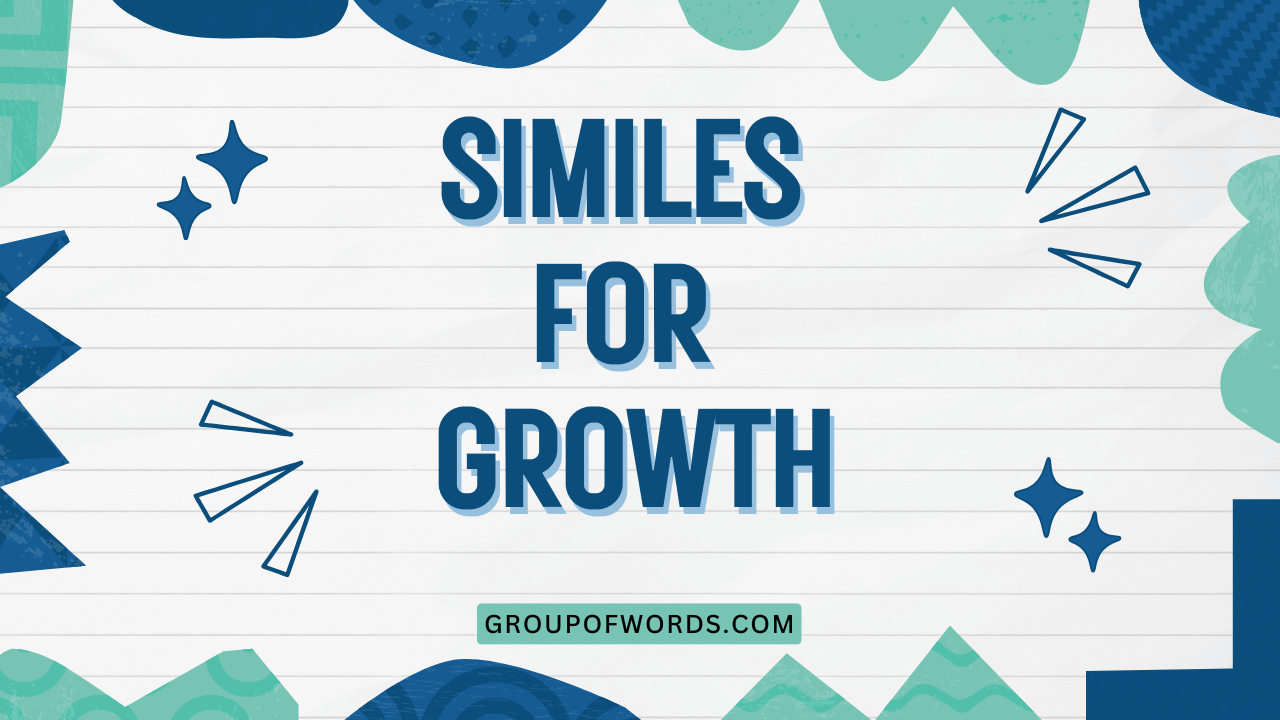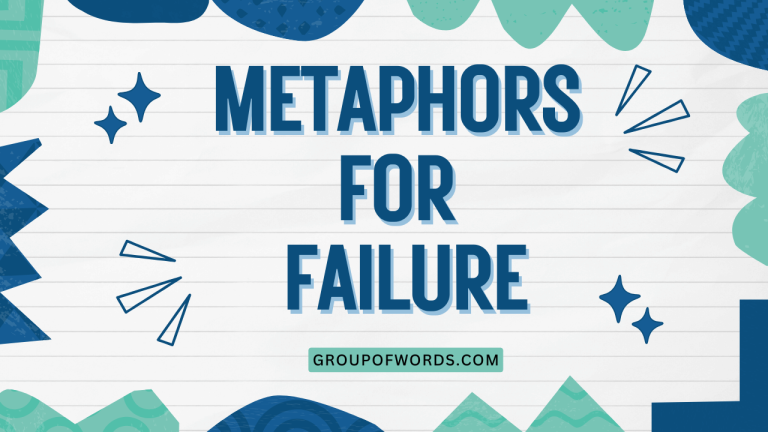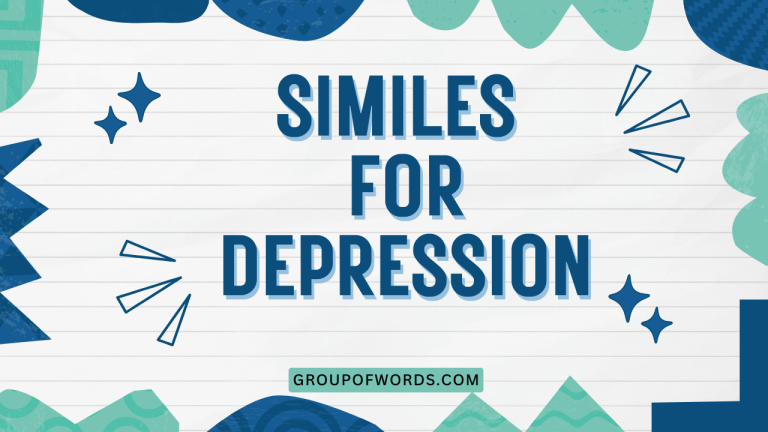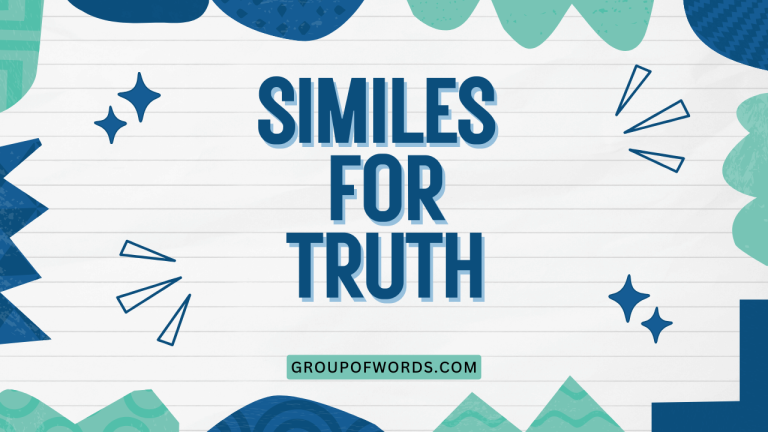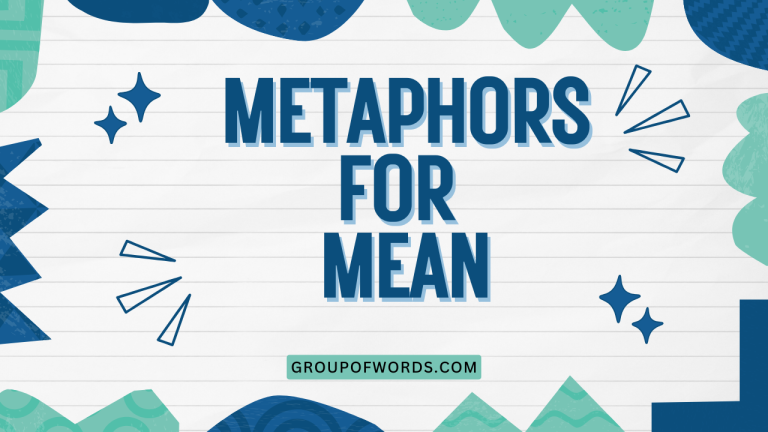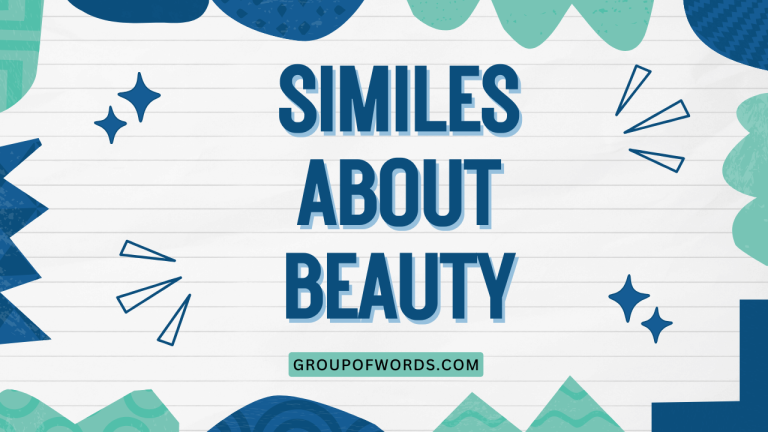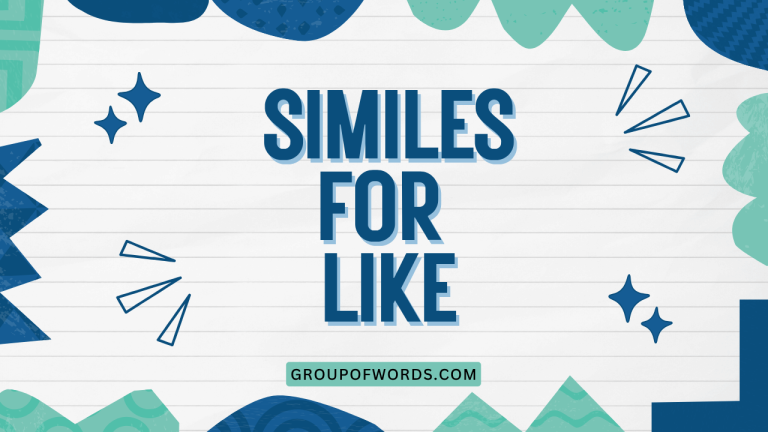Similes for Growth: A Comprehensive Guide to Figurative Language
Understanding similes is crucial for mastering figurative language, a key element of effective communication and creative writing. Similes, which compare two unlike things using “like” or “as,” add vividness and depth to our descriptions, making our language more engaging and impactful.
This article explores the nuances of similes specifically related to the concept of growth, providing numerous examples, structural insights, and practical exercises. Whether you’re an ESL student, a budding writer, or simply someone looking to enhance your linguistic skills, this comprehensive guide will equip you with the knowledge and tools to use similes effectively in your writing and speech.
By understanding and utilizing similes effectively, you can enrich your writing, making it more vivid, memorable, and persuasive. This skill is particularly beneficial for creative writing, narrative storytelling, and even professional communication where clarity and impact are paramount.
Growth is a rich and complex topic, and similes offer a powerful way to explore its many facets.
Table of Contents
- Introduction
- Definition of Simile
- Structural Breakdown of Similes
- Types of Similes
- Examples of Similes for Growth
- Usage Rules for Similes
- Common Mistakes with Similes
- Practice Exercises
- Advanced Topics in Similes
- Frequently Asked Questions
- Conclusion
Definition of Simile
A simile is a figure of speech that compares two different things in an interesting way. It shows the similarities between two unrelated things using the words “like” or “as.” The purpose of a simile is to add descriptive detail and make writing more vivid and engaging. Unlike a metaphor, which directly equates two things, a simile acknowledges the comparison with explicit connecting words.
Similes are a fundamental tool in rhetoric and literature, allowing writers to create imagery and convey complex ideas in a relatable manner. They bridge the gap between the known and the unknown, helping readers understand unfamiliar concepts by relating them to something familiar.
In the context of growth, similes can illustrate the process, speed, or extent of development in various aspects of life.
The key characteristics of a simile include:
- Comparison: It establishes a connection between two distinct entities.
- Connective Words: It uses “like” or “as” to signal the comparison.
- Figurative Meaning: The comparison is not literal but rather imaginative and evocative.
Structural Breakdown of Similes
The basic structure of a simile consists of three main components: the subject, the connective word, and the object of comparison. Understanding each part is essential for constructing effective and meaningful similes.
- Subject: This is the thing being compared. It could be a person, object, idea, or situation.
- Connective Word: This word explicitly indicates the comparison. The most common connective words are “like” and “as.”
- Object of Comparison: This is the thing to which the subject is being compared. It should share a relevant characteristic with the subject.
For example, in the simile “His knowledge grew like a tree,” “His knowledge” is the subject, “like” is the connective word, and “a tree” is the object of comparison. The shared characteristic is the gradual and steady increase in size or complexity.
Variations in sentence structure can also influence the impact of a simile. The subject and object of comparison can be placed in different positions within the sentence to create emphasis or stylistic effect.
For example:
- Standard: “She blossomed like a flower.”
- Inverted: “Like a flower, she blossomed.”
The inverted structure places emphasis on the object of comparison, “flower,” drawing attention to the qualities associated with it, such as beauty and fragility.
Types of Similes
While all similes share the basic structure of comparison using “like” or “as,” they can be categorized based on the aspect of comparison they emphasize or the effect they create. Here are a few common types of similes:
Descriptive Similes
These similes focus on describing a quality or characteristic of the subject by comparing it to something else. They aim to create a vivid image in the reader’s mind.
Emphatic Similes
Emphatic similes are used to emphasize a particular point or feeling. They often involve strong or exaggerated comparisons to drive home the message.
Humorous Similes
These similes are intended to be funny or ironic. They often involve unexpected or absurd comparisons that create a comedic effect.
Ironic Similes
Ironic similes use comparison to convey the opposite of what is literally stated, often for satirical purposes.
Examples of Similes for Growth
Similes can be particularly effective in describing different types of growth. Below are examples categorized by the specific type of growth being illustrated.
Physical Growth
Physical growth refers to the development of the body over time. Similes can capture the gradual or rapid changes in size, strength, and appearance.
The following table provides examples of similes that vividly describe physical growth. Each example uses “like” or “as” to make a comparison that enhances the understanding of how something grows physically.
| Simile | Explanation |
|---|---|
| He shot up like a weed. | Implies rapid and often unexpected growth in height. |
| She grew as tall as her mother. | Indicates reaching a specific height milestone. |
| His muscles developed like iron bands. | Describes the strengthening and hardening of muscles. |
| The baby grew like a sponge absorbing water. | Conveys rapid absorption and expansion. |
| The plant grew as if it were on steroids. | Exaggerates the speed and intensity of growth. |
| He filled out like a Thanksgiving turkey. | Describes gaining weight quickly. |
| Her hair grew as long as Rapunzel’s. | Refers to exceptionally long hair. |
| The child grew like a sapling reaching for the sun. | Illustrates upward growth and striving. |
| He expanded like a balloon being inflated. | Describes growth in size, particularly width. |
| She matured as gracefully as a swan. | Conveys elegant and refined physical development. |
| His beard grew like a thicket. | Describes dense and untamed facial hair growth. |
| The tumor grew like a malignant vine. | Illustrates uncontrolled and harmful growth. |
| He bulked up like a bodybuilder. | Describes significant muscle mass increase. |
| She blossomed like a flower in spring. | Conveys a beautiful and vibrant transformation. |
| His height increased as steadily as a growing tree. | Describes consistent and gradual height gain. |
| The puppy grew like a furry little weed. | Implies rapid growth in a young animal. |
| He became as broad-shouldered as an oak. | Describes a wide and strong physique. |
| Her belly grew as round as a beach ball. | Illustrates the expansion of a pregnant woman’s abdomen. |
| The child’s limbs grew like lengthening branches. | Conveys the proportional extension of arms and legs. |
| He filled out like a well-fed bear. | Describes gaining weight and muscle mass. |
| Her fingernails grew as sharp as claws. | Illustrates the sharpness and length of fingernails. |
| His frame expanded like a blacksmith’s bellows. | Describes the widening of the chest and shoulders. |
| She gained height as quickly as bamboo shoots. | Conveys very rapid and noticeable height increase. |
| The baby’s cheeks grew as plump as peaches. | Illustrates round and full cheeks. |
| His body grew like a sculpted statue. | Describes a well-defined and aesthetically pleasing physique. |
Intellectual Growth
Intellectual growth refers to the development of cognitive abilities, knowledge, and understanding. Similes can illustrate the expansion of the mind and the acquisition of new skills and insights.
The following table displays similes that describe intellectual growth. These examples use comparisons with elements like light, seeds, and journeys to convey how knowledge and understanding develop over time.
| Simile | Explanation |
|---|---|
| Her knowledge grew like a spreading vine. | Implies extensive and interconnected learning. |
| His understanding dawned like a sunrise. | Conveys a sudden and clear realization. |
| Her mind expanded like the universe. | Describes limitless intellectual growth. |
| His ideas blossomed like spring flowers. | Indicates the emergence of new and vibrant thoughts. |
| Her intellect sharpened like a knife. | Illustrates the honing of mental skills. |
| His wisdom deepened like a well. | Conveys the accumulation of profound knowledge. |
| Her learning progressed as steadily as a ticking clock. | Describes consistent and gradual intellectual development. |
| His curiosity grew like wildfire. | Implies a rapid and uncontrollable desire to learn. |
| Her skills developed as precisely as a computer program. | Describes methodical and accurate skill acquisition. |
| His insights emerged like stars in the night sky. | Conveys the gradual revelation of profound truths. |
| Her comprehension grew like a tree putting down roots. | Illustrates the establishment of a solid foundation of understanding. |
| His intellect matured as gracefully as aged wine. | Conveys refined and sophisticated mental development. |
| Her thoughts flowed as freely as a river. | Describes the ease and fluency of her thinking. |
| His knowledge sprouted like seeds in fertile soil. | Indicates the rapid and successful growth of new information. |
| Her expertise grew as meticulously as a crafted sculpture. | Describes careful and detailed skill development. |
| His understanding unfolded like the petals of a flower. | Conveys the gradual and beautiful revelation of knowledge. |
| Her mind absorbed information like a sponge. | Illustrates the capacity to quickly retain vast amounts of knowledge. |
| His intellectual journey progressed as surely as a guided missile. | Describes focused and directed intellectual advancement. |
| Her wisdom grew as steadily as the rings of a tree. | Conveys the accumulation of experience and knowledge over time. |
| His comprehension dawned as clearly as a bright light. | Indicates a sudden and complete understanding. |
| Her intellectual capacity expanded like a library’s collection. | Describes a vast and growing range of knowledge. |
| His mind became as sharp as a razor. | Illustrates a keen and incisive intellect. |
| Her learning curve rose as steeply as a mountain climb. | Conveys rapid and significant intellectual progress. |
| His understanding deepened like layers of sediment. | Describes the gradual accumulation of knowledge and insight. |
| Her intellect blossomed like a rare orchid. | Indicates unique and exceptional intellectual development. |
Emotional Growth
Emotional growth involves developing emotional intelligence, resilience, and the ability to manage and understand one’s feelings and the feelings of others. Similes can illustrate the maturation of emotional capacities.
The subsequent table features similes that articulate emotional growth. These similes use comparisons with elements like healing wounds, strong trees, and gentle streams to describe the development of emotional maturity and resilience.
| Simile | Explanation |
|---|---|
| Her resilience grew like a sturdy oak. | Implies strength and stability in the face of adversity. |
| His empathy deepened like a flowing river. | Conveys an increasing capacity for understanding others’ feelings. |
| Her self-awareness blossomed like a lotus. | Indicates the beautiful and gradual unfolding of inner understanding. |
| His emotional intelligence developed as precisely as a calibrated instrument. | Describes the accurate and refined growth of emotional skills. |
| Her capacity for forgiveness grew like a healing wound. | Illustrates the gradual process of emotional recovery. |
| His emotional strength grew as steadily as a mountain rising. | Conveys the consistent and powerful development of inner fortitude. |
| Her emotional maturity unfolded like the pages of a cherished book. | Describes the gradual and meaningful development of emotional understanding. |
| His ability to cope grew like roots anchoring a tree. | Implies a strong and supportive foundation for managing challenges. |
| Her emotional landscape expanded like a vibrant garden. | Conveys the richness and complexity of her emotional life. |
| His emotional depth grew as silently as the ocean’s tides. | Describes the profound and often unseen development of emotional understanding. |
| Her emotional boundaries strengthened like fortress walls. | Illustrates the establishment of healthy emotional limits. |
| His ability to love grew as unconditionally as a mother’s. | Conveys boundless and unwavering affection. |
| Her emotional growth progressed as deliberately as a sculptor’s art. | Describes careful and intentional emotional development. |
| His capacity for joy grew like sunshine warming the earth. | Indicates an increasing ability to experience happiness and contentment. |
| Her emotional wisdom deepened as quietly as a forest growing. | Conveys the profound and subtle development of emotional understanding. |
| His emotional resilience developed as surely as a building’s foundation. | Illustrates the steadfast and reliable growth of inner strength. |
| Her emotional intelligence blossomed like a rare and delicate flower. | Describes the unique and beautiful unfolding of emotional skills. |
| His capacity for compassion grew as gently as a spring rain. | Conveys a tender and nurturing ability to empathize with others. |
| Her emotional growth progressed as steadily as the changing seasons. | Describes the natural and consistent development of emotional maturity. |
| His emotional understanding deepened as surely as the ocean’s depths. | Illustrates a profound and thorough comprehension of emotions. |
| Her emotional strength grew like a mountain’s peak reaching for the sky. | Describes a powerful and aspirational development of inner fortitude. |
| His ability to connect with others grew as warmly as a hearth fire. | Conveys a welcoming and comforting capacity for social interaction. |
| Her emotional resilience blossomed like a desert flower after rain. | Indicates a beautiful and unexpected resurgence of inner strength. |
| His capacity for empathy deepened as gradually as a tree’s roots. | Describes a thorough and embedded development of understanding others’ feelings. |
| Her emotional intelligence grew as brightly as a guiding star. | Illustrates the illuminating and directional development of emotional skills. |
Spiritual Growth
Spiritual growth involves developing a deeper understanding of oneself, one’s purpose, and one’s connection to something greater than oneself. Similes can illustrate the deepening of faith, inner peace, and enlightenment.
The table below provides similes that depict spiritual growth. Comparisons with elements like light, rivers, and mountains convey the deepening of faith, inner peace, and connection to something greater.
| Simile | Explanation |
|---|---|
| His faith grew like a mustard seed. | Implies small beginnings leading to significant growth. |
| Her inner peace deepened like a still lake. | Conveys tranquility and serenity. |
| His enlightenment dawned like a new day. | Indicates a sudden and clear understanding. |
| Her spirituality blossomed like a sacred flower. | Describes the beautiful unfolding of inner faith. |
| His connection to the divine grew as strongly as a mountain reaching for the sky. | Conveys a powerful and aspirational spiritual bond. |
| Her understanding of her purpose deepened as gradually as a river flowing to the sea. | Describes a natural and consistent progression toward self-realization. |
| His spiritual journey unfolded like the pages of an ancient scroll. | Illustrates the gradual and meaningful development of faith. |
| Her sense of interconnectedness grew like roots intertwining beneath the earth. | Implies a deep and supportive connection to all living things. |
| His spiritual wisdom deepened as quietly as the stars appearing in the night sky. | Conveys the subtle and profound development of inner understanding. |
| Her faith strengthened like a fortress protecting her soul. | Illustrates the protective and supportive nature of her beliefs. |
| His spiritual growth progressed as surely as the sun rising each morning. | Describes the reliable and consistent development of his faith. |
| Her inner light grew as brightly as a beacon guiding ships at sea. | Conveys the illuminating and guiding nature of her spiritual understanding. |
| His capacity for compassion expanded like a boundless ocean. | Indicates a limitless ability to empathize with others. |
| Her spiritual resilience grew as steadily as a mountain weathering storms. | Describes the strong and enduring nature of her faith. |
| His understanding of the universe deepened like layers of sediment revealing ancient secrets. | Illustrates the profound and gradual uncovering of spiritual truths. |
| Her connection to the divine blossomed like a rare and precious flower. | Describes the unique and beautiful unfolding of her spiritual bond. |
| His spiritual growth progressed as deliberately as a pilgrim’s journey. | Conveys the intentional and focused development of his faith. |
| Her sense of peace deepened as quietly as snowfall covering the earth. | Illustrates the serene and calming nature of her spiritual understanding. |
| His spiritual journey unfolded as gently as a butterfly emerging from its chrysalis. | Describes the beautiful and transformative nature of his faith. |
| Her faith grew as surely as a tree growing towards the light. | Conveys the natural and aspirational development of her beliefs. |
| His spiritual awareness grew as brightly as a star illuminating the darkness. | Illustrates the illuminating and guiding nature of his spiritual understanding. |
| Her understanding of the divine deepened as gradually as the changing seasons. | Describes the natural and consistent progression of her spiritual insight. |
| His spiritual growth progressed as steadily as the tides moving with the moon. | Conveys the reliable and consistent development of his faith. |
| Her connection to her inner self grew as strongly as roots anchoring a tree. | Illustrates the solid and supportive foundation of her spiritual identity. |
| His spiritual understanding grew as vast as the universe itself. | Describes a limitless and profound comprehension of spiritual truths. |
Career Growth
Career growth refers to the advancement and development of one’s professional skills, responsibilities, and opportunities. Similes can illustrate the progress, challenges, and rewards of career development.
The following table provides similes that illustrate career growth. These comparisons use elements like climbing mountains, building structures, and nurturing plants to describe professional development and advancement.
| Simile | Explanation |
|---|---|
| His career climbed like a skyscraper. | Implies rapid and significant upward progression. |
| Her skills developed as precisely as a master craftsman’s. | Describes the refined and accurate growth of professional abilities. |
| His responsibilities grew like branches on a tree. | Conveys the increasing complexity and scope of his duties. |
| Her influence expanded like a ripple in a pond. | Illustrates the spreading impact of her work. |
| His career blossomed like a well-tended garden. | Describes the beautiful and successful development of his professional life. |
| Her expertise deepened as surely as the roots of an ancient tree. | Conveys the profound and embedded nature of her professional knowledge. |
| His professional network grew like a spiderweb connecting distant points. | Illustrates the extensive and interconnected nature of his professional relationships. |
| Her career trajectory rose as steeply as a rocket launching into space. | Describes a rapid and dramatic upward progression. |
| His professional reputation strengthened like a fortress standing against time. | Illustrates the enduring and respected nature of his professional standing. |
| Her career opportunities unfolded like the petals of a flower revealing hidden beauty. | Conveys the gradual and rewarding revelation of new possibilities. |
| His professional development progressed as deliberately as an architect designing a building. | Describes the intentional and strategic growth of his career. |
| Her career path widened like a river flowing into a vast ocean. | Illustrates the expansive and limitless possibilities of her professional life. |
| His professional skills sharpened like a blade honed to perfection. | Conveys the refined and effective nature of his abilities. |
| Her influence spread like wildfire igniting innovation and change. | Describes the rapid and impactful dissemination of her ideas. |
| His career accomplishments grew as steadily as rings on a tree trunk. | Illustrates the consistent and cumulative nature of his professional achievements. |
| Her professional network expanded like branches reaching out to touch others. | Describes the extensive and interconnected nature of her professional relationships. |
| His career momentum built as surely as a snowball rolling down a hill. | Conveys the increasing speed and force of his professional advancement. |
| Her professional growth progressed as purposefully as an explorer charting new territory. | Describes the intentional and pioneering nature of her career development. |
| His career path unfolded like a map revealing hidden treasures and opportunities. | Illustrates the gradual and rewarding discovery of new professional possibilities. |
| Her professional skills developed as precisely as an engineer designing a bridge. | Conveys the accurate and reliable nature of her abilities. |
| His influence grew like a tree providing shelter and sustenance to others. | Describes the supportive and impactful nature of his professional contributions. |
| Her career accomplishments stood as tall as monuments to her dedication and hard work. | Illustrates the significant and lasting impact of her professional achievements. |
| His professional journey progressed as steadily as a ship navigating the seas. | Conveys the reliable and purposeful nature of his career development. |
| Her career trajectory rose as gracefully as a ballerina leaping across the stage. | Describes the elegant and impressive upward progression of her career. |
| His professional growth blossomed like a thriving garden, full of color and life. | Illustrates flourishing career success and vibrancy. |
Usage Rules for Similes
Using similes effectively requires adhering to certain rules to ensure clarity, impact, and appropriateness. Here are some key guidelines:
- Ensure a Clear Connection: The comparison between the subject and object should be easily understood and relevant. The shared characteristic should be apparent to the reader.
- Avoid Clichés: Overused similes, such as “as busy as a bee” or “as strong as an ox,” can detract from the originality and impact of your writing. Strive for fresh and imaginative comparisons.
- Maintain Consistency: The tone and style of the simile should be consistent with the overall tone and style of your writing. Avoid jarring or inappropriate comparisons.
- Be Specific: The more specific and detailed the comparison, the more vivid and engaging the simile will be. Avoid vague or general comparisons.
- Consider the Audience: Tailor your similes to the knowledge and understanding of your audience. Avoid comparisons that may be unfamiliar or confusing.
Example of a weak simile: “He grew like something.” (Vague and lacks a clear connection.)
Example of a strong simile: “He grew like a sunflower reaching for the sun.” (Specific and creates a vivid image.)
Common Mistakes with Similes
Even experienced writers can make mistakes when using similes. Being aware of these common errors can help you avoid them and improve the quality of your writing.
- Mixing Metaphors and Similes: Confusing similes with metaphors is a common error. Remember that similes use “like” or “as” to make a comparison, while metaphors directly equate two things.
- Creating Illogical Comparisons: The comparison should make sense and highlight a relevant similarity between the subject and object. Avoid comparisons that are illogical or nonsensical.
- Using Too Many Similes: Overusing similes can make your writing feel cluttered and distracting. Use them sparingly and strategically to enhance your descriptions.
- Employing Mixed Similes: A mixed simile combines elements that don’t logically fit together.
Incorrect: “He was as tall as a building, but his ideas spread like wildfire in the ocean.” (Illogical comparison and mixed simile.)
Correct: “He was as tall as a building, and his ideas spread like wildfire.” (Logical comparison.)
The following table illustrates some common mistakes with similes and provides corrections:
| Incorrect | Correct | Explanation |
|---|---|---|
| He is a lion. (Metaphor used as a simile) | He is like a lion. | Similes use “like” or “as” for comparison. |
| She grew as fast as slow. (Illogical comparison) | She grew as fast as a weed. | The comparison should be logical and make sense. |
| The idea was like, you know, a thing. (Vague and unclear) | The idea was like a beacon in the darkness. | Similes should be specific and create a clear image. |
| He was as big as an ant. (Contradictory) | He was as small as an ant. | The comparison should align with the intended meaning. |
| She was as happy as blue. (Nonsensical) | She was as happy as a lark. | The comparison should be meaningful and relatable. |
Practice Exercises
Test your understanding of similes with these practice exercises. Choose the best simile to complete each sentence or identify the type of simile used.
Exercise 1: Completing Similes
Complete each sentence with an appropriate simile using “like” or “as.”
| Question | Answer |
|---|---|
| 1. Her voice was as smooth __________. | 1. as silk. |
| 2. He ran as fast __________. | 2. as the wind. |
| 3. The news spread __________ wildfire. | 3. like. |
| 4. The child slept __________ a log. | 4. like. |
| 5. His anger flared __________ a sudden storm. | 5. like. |
| 6. The desert was as dry __________ . | 6. as a bone. |
| 7. She danced __________ a graceful swan. | 7. like. |
| 8. The old house stood __________ a silent sentinel. | 8. like. |
| 9. The stars twinkled __________ diamonds in the sky. | 9. like. |
| 10. The waves crashed __________ thunder on the shore. | 10. like. |
Exercise 2: Identifying Similes
Identify which of the following sentences use similes correctly.
- The moon is a silver coin.
- The sun shone like a golden orb.
- His heart was a stone.
- Her eyes sparkled like stars.
- Time is a thief.
Answers: 2, 4
Exercise 3: Writing Similes
Write a simile for each of the following words:
- Love
- Fear
- Hope
- Despair
- Joy
Sample Answers:
- Love is like a warm embrace.
- Fear is like a dark shadow.
- Hope is like a glimmer of light.
- Despair is like a bottomless pit.
- Joy is like a burst of sunshine.
Advanced Topics in Similes
For advanced learners, exploring more complex aspects of similes can further enhance their writing skills. Here are some advanced topics to consider:
- Extended Similes: These similes involve a series of related comparisons that develop a more detailed and nuanced image.
- Subverted Similes: These similes intentionally defy expectations by creating unexpected or ironic comparisons.
- Cultural Similes: These similes draw on cultural references or idioms to create a deeper connection with the reader.
Frequently Asked Questions
- What is the difference between a simile and a metaphor?
A simile compares two things using “like” or “as,” while a metaphor directly equates two things without using these words. Similes acknowledge the comparison, whereas metaphors assert that one thing *is* another.
- Can a simile be too obvious?
Yes, using clichés or overused similes can make your writing seem unoriginal and predictable. Strive for fresh and imaginative comparisons that will surprise and delight your readers.
- How can I make my similes more effective?
Be specific, use vivid language, and choose comparisons that are relevant and meaningful. Consider your audience and tailor your similes to their knowledge and understanding.
- Is it okay to use similes in formal writing?
Yes, similes can be used in formal writing, but use them sparingly and choose comparisons that are appropriate for the context and audience. Avoid overly informal or colloquial similes.
- What if I can’t think of a good simile?
Don’t
don’t force it. Sometimes, the best approach is to describe something directly without using figurative language. If you can’t come up with a simile that enhances your writing, it’s better to omit it.
Conclusion
Similes are powerful tools for enhancing your writing and communication. By understanding their structure, types, and usage rules, you can effectively use similes to create vivid images, emphasize key points, and engage your audience.
Whether you’re describing physical growth, intellectual development, emotional maturity, spiritual deepening, or career advancement, similes can add depth and richness to your descriptions. Practice using similes regularly, and don’t be afraid to experiment with different comparisons to find what works best for you.
With practice, you’ll be able to use similes with confidence and skill, making your writing more compelling and memorable.
